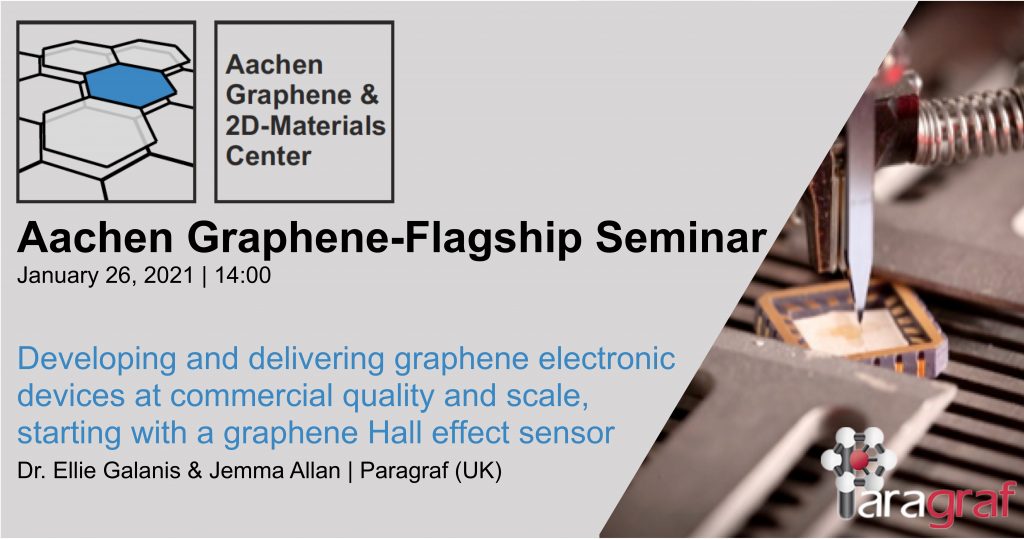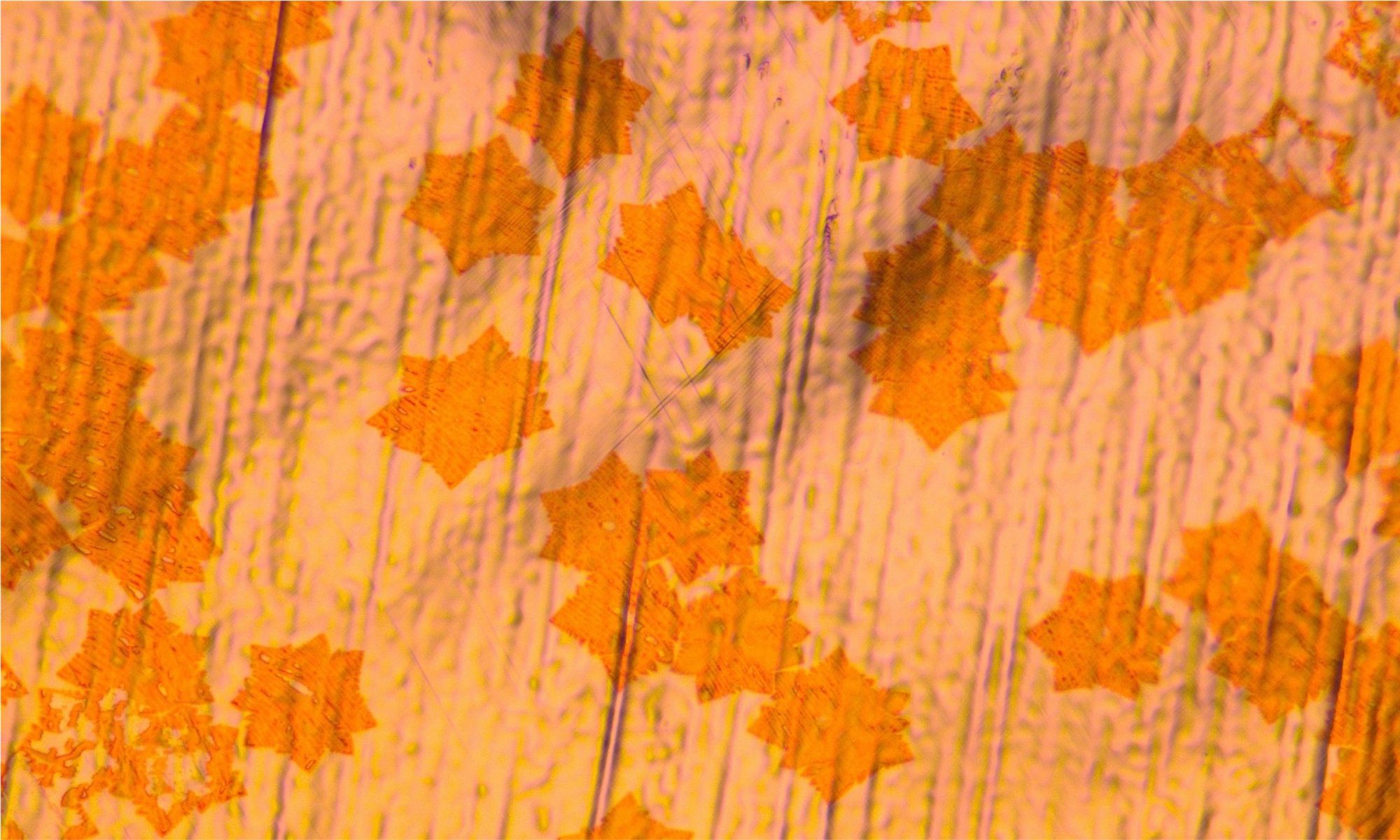MISEL is a new project funded by the European Commission that aims at developing a bio-inspired vision system able to implement advanced recognition tasks with high energy efficiency. A key aspect of the project are intensity-adaptive photdetectors based on graphene, which will be developed by the Graphene Electronics group at AMO and the group of Daniel Neumaier at the University of Wuppertal.
Continue reading “MISEL: a new EU-project for developing an intelligent camera-sensor technology”A look behind Paragraf’s Graphene Hall Sensor
On January 26, the Aachen Graphene & 2D Materials center will host a seminar by Dr. Ellie Galanis and Jemma Allan, who will share some of the insights beyond the commercially available graphene Hall sensor produced by Paragraf.

Dr. Annika Kurzmann joins the Aachen Graphene & 2D Materials Center
The Aachen Graphene & 2D Materials Center gains another new member: Dr. Annika Kurzmann, who has just moved to Aachen with a Junior Principal Investigator Fellowship of the RWTH Aachen University.
Continue reading “Dr. Annika Kurzmann joins the Aachen Graphene & 2D Materials Center”The Aachen Graphene & 2D Materials Center gains a new member
Dr. Zhenxing Wang, head of the Graphene Electronics Group at AMO GmbH, is a new member of the Aachen Graphene & 2D Materials Center.
Continue reading “The Aachen Graphene & 2D Materials Center gains a new member”Prof. Dante Kennes joins the Aachen Graphene & 2D Materials Center
In October, the Aachen Graphene & 2D Materials Center has gained a new member: Prof. Dante Kennes, professor for Theoretical Condensed Matter Physics at RWTH Aachen University and visiting scientist at the Max Planck Institute for the Structure and Dynamics of Matter in Hamburg.
Continue reading “Prof. Dante Kennes joins the Aachen Graphene & 2D Materials Center”Strong presence of the Aachen Graphene & 2D Materials Center at Graphene2020
Graphene2020 – the 10th edition of Graphene Conference series – will start in a few days, October 19-23, 2020. This is the largest European Event in Graphene and 2D Materials, and a main meeting point of the graphene community worldwide.
Continue reading “Strong presence of the Aachen Graphene & 2D Materials Center at Graphene2020”The 2D-Experimental Pilot Line is at the starting blocks
Bridging the gap between lab-scale manufacturing and large volume production of electronic devices based on two-dimensional materials – this is the mission of the 2D Experimental Pilot Line, a €20 million project funded by the European Commission within the H2020 program. Its kick-off meeting is planned on Thursday, October 8, 2020.
Continue reading “The 2D-Experimental Pilot Line is at the starting blocks”Ultrafast machine vision with 2D semiconductor photodiode arrays – a seminar by Prof. Thomas Mueller
On Tuesday, October 6, the Aachen Graphene & 2D Materials will host a seminar by Prof. Thomas Mueller, from the Technical University of Vienna, who will present his latest results on how to exploit 2D-semiconductor photodiode-arrays for ultrafast machine vision.
Continue reading “Ultrafast machine vision with 2D semiconductor photodiode arrays – a seminar by Prof. Thomas Mueller”A new DAAD Fellow joins the Center
The Aachen Graphene & 2D Materials Center warmly welcomes Mr. Animesh Partap Singh.
Continue reading “A new DAAD Fellow joins the Center”Fractional quantum Hall effect in CVD-grown graphene
CVD-grown graphene passed the ultimate test to be considered absolutely on-pair with exfoliated graphene, allowing the observation of clear signatures of the fractional quantum Hall effect.
Continue reading “Fractional quantum Hall effect in CVD-grown graphene”